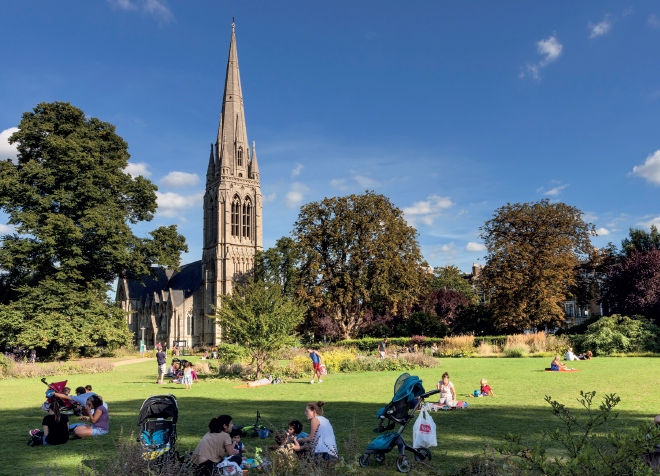Green space
Green space (or greenspace) is an area of vegetated land (grass, trees, shrubs, etc.) within an urban context, i.e. the countryside is generally not considered to be greenspace.
The SuDS Manual published by CIRIA in 2015 suggests that a green space is: ‘An area of grass, trees or other vegetation set apart for recreational or aesthetic purposes in an otherwise urban environment.’
The HS2 London-West Midlands Environmental Statement, published by the Department for Transport in November 2013 suggests that green spaces are areas of natural or semi-natural land. For example parks, gardens and woodlands.
Typical examples of green space include:
- Community gardens.
- Parks.
- Common land.
- Cemeteries.
- Woods.
- Meadows.
- Green roofs.
- Playing fields.
- Wetlands.
- Allotments.
- Green corridors such as paths, disused railway lines, rivers, canals and so on.
- Derelict or abandoned land that has been redeveloped into useable green space.
Green spaces play an important role in an urban ‘ecosystem’, providing a place for physical activity, relaxation, social interaction, community events, and so on. In high-density urban areas, or areas with a high concentration of traffic, green spaces can provide a place that is relatively free from air and noise pollution.
Access to green spaces is considered important for mental health and wellbeing. The World Health Organisation (WHO) has highlighted analysis suggesting that physical activity in a natural environment can help alleviate mild depression and reduce physiological stress indicators.
Green spaces, particularly those with water features, can also play a critical role in cooling cities, particularly mitigating the urban heat island effect (UHI), which is primarily caused by the replacement of natural surfaces with hard impervious surfaces that are generally dark and absorb large amounts of solar radiation. This has a significant impact on thermal comfort in city environments.
Landscape urbanism is the theory of urban planning through the medium of landscape. It promotes the general idea that cities are best planned and organised, not through building and infrastructure design, but through the design of landscape.
NB The green belt establishes a buffer zone between urban and rural land, separating town and country and preserving land for forestry, agriculture and wildlife where environmental conditions can be improved and conservation encouraged.
[edit] Related articles on Designing Buildings Wiki
- All about wellness.
- Biodiversity in the urban environment.
- Biophilia.
- Biophilic design - health and wellbeing in buildings.
- Blue space.
- Garden cities.
- Green belt.
- Green infrastructure.
- Green roofs.
- Land.
- Landscape urbanism.
- Living Roofs and Walls, from policy to practice.
- Local green space
- Open space.
- Spontaneous City at Cow Tower.
- The benefits of urban trees.
- Types of land.
- Village green.
Surrey Hills Directory
[edit] Planning
Building Design in the Surrey Hills
[edit] Highways
Conserving and Enhancing Country Lanes in the Surrey Hills AONB
[edit] Biodiversity & Landscape
Landscapes Review: National Parks & AONBs 2019
Light Pollution - Threat to Migrating Birds
Making Local Nature Recovery Strategies deliver
[edit] Health & Wellbeing
Nature and Wellbeing: The Evidence
How nature can be used to improve wellbeing







